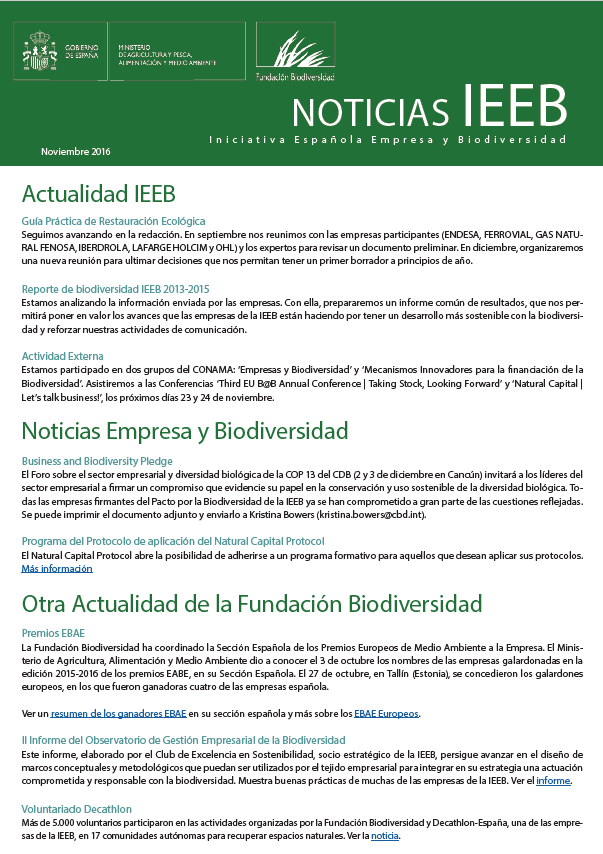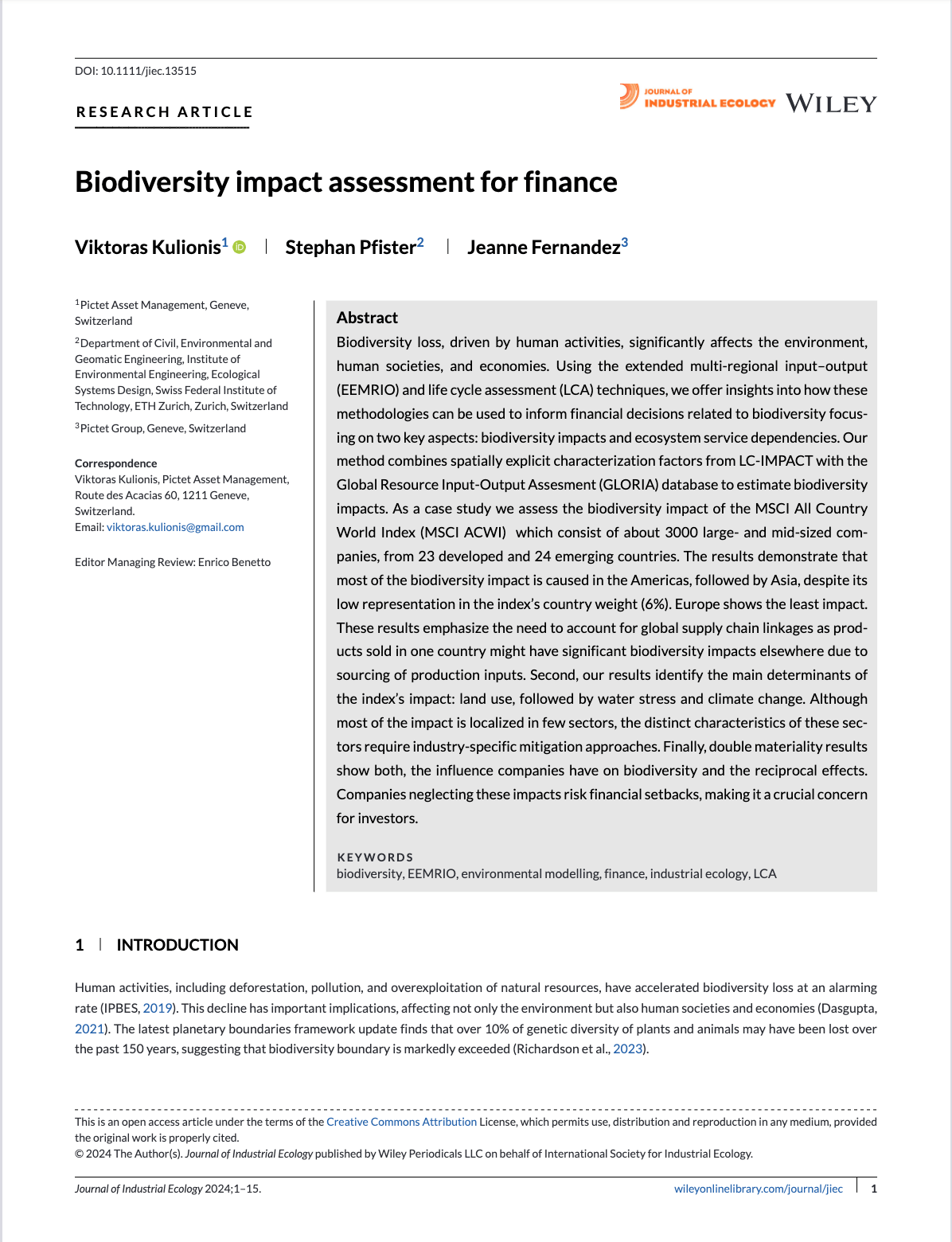Biodiversity impact assessment for finance
Detalles
| The loss of biodiversity, caused by human activities, significantly affects the environment, human societies and economies. Using the techniques of extended multi-regional input-output (EEMRIO) and life cycle assessment (LCA), the authors of this paper offer an insight into how these methodologies can be used to inform biodiversity-related financing decisions by focusing on two key aspects: impacts on biodiversity and dependencies on ecosystem services. The method used in their research combines spatially explicit characterization factors from LC-IMPACT with the Global Resource Input-Output Assessment (GLORIA) database to estimate impacts on biodiversity. As a case study, the biodiversity impact of the MSCI All Country World Index (MSCI ACWI), composed of some 3000 large and medium-sized companies from 23 developed and 24 emerging countries, is assessed. The results show that most of the impact on biodiversity occurs in the Americas, followed by Asia, despite its low representation in the index's country weighting (6%). Europe shows the least impact. These results underscore the need to take into account global supply chain linkages, as products sold in one country can have significant impacts on biodiversity elsewhere due to the origin of production inputs. Second, the results identify the main determinants of the index's impact: land use, followed by water stress and climate change. Although most of the impact is localized to a few sectors, the distinctive characteristics of these require industry-specific mitigation approaches. Finally, the results of dual materiality show both the influence of companies on biodiversity and the reciprocal effects. Companies that neglect these impacts risk financial setbacks, so this is a crucial concern for investors. |
Recursos relacionados

2023
The importance of restoring nature in Europe
El informe de la AEMA «La importancia de restaurar la naturaleza en Europa» resume las razones por las que los…


Aligning Financial Flows with the Global Biodiversity Framework: Translating Ambition into Implementation
Produced in collaboration with leading financial institutions, this paper outlines key steps governments can take to align financial flows with…


